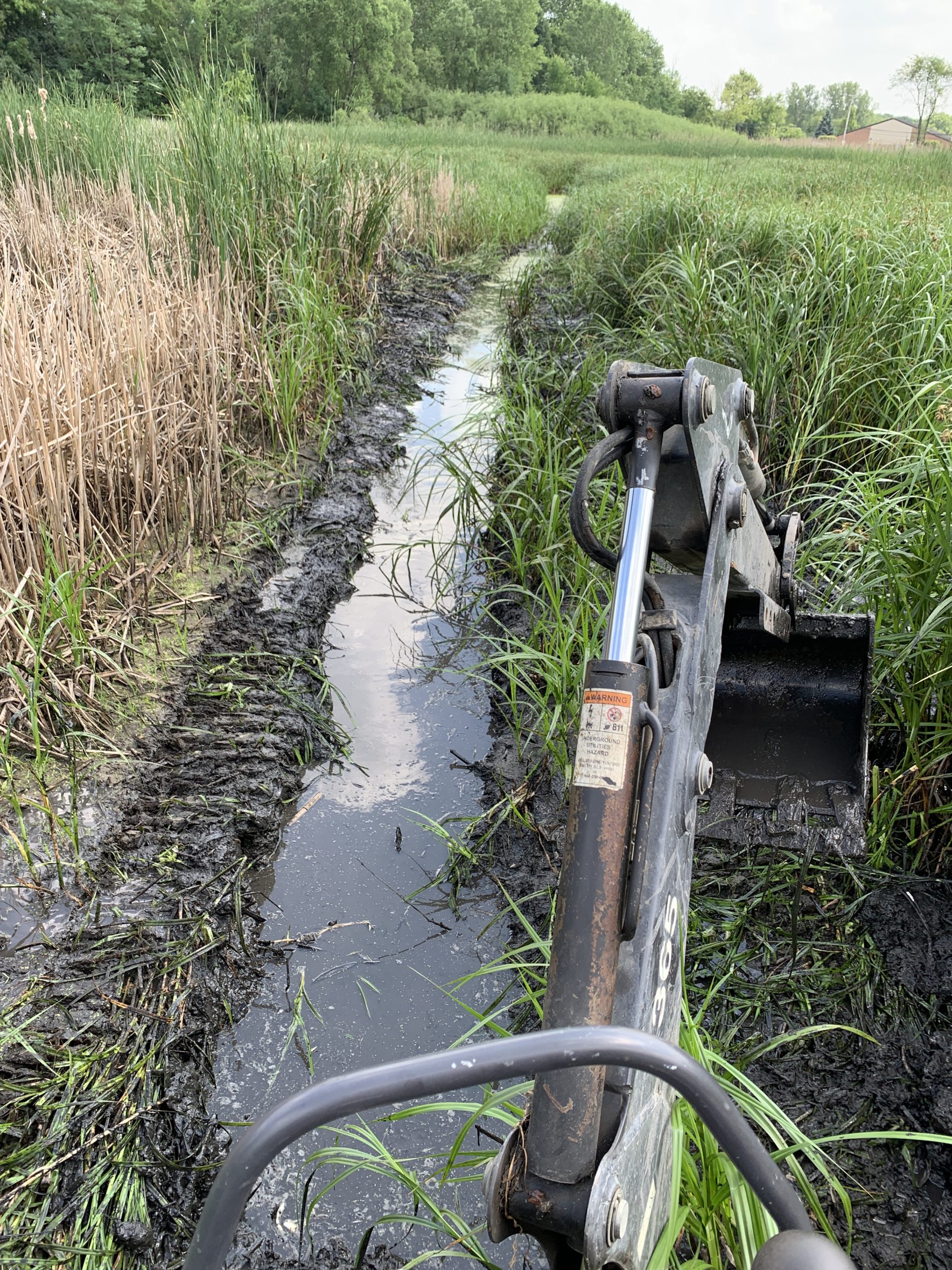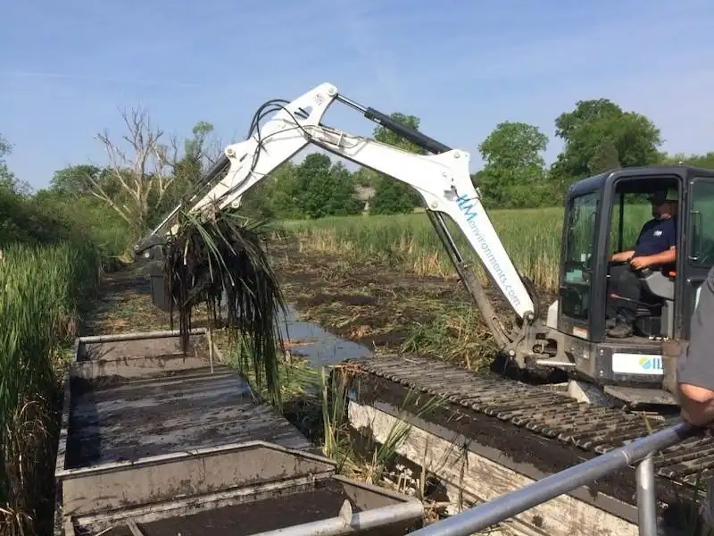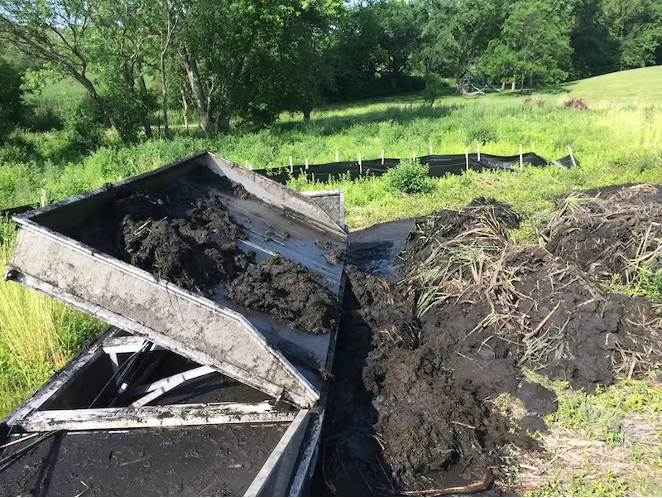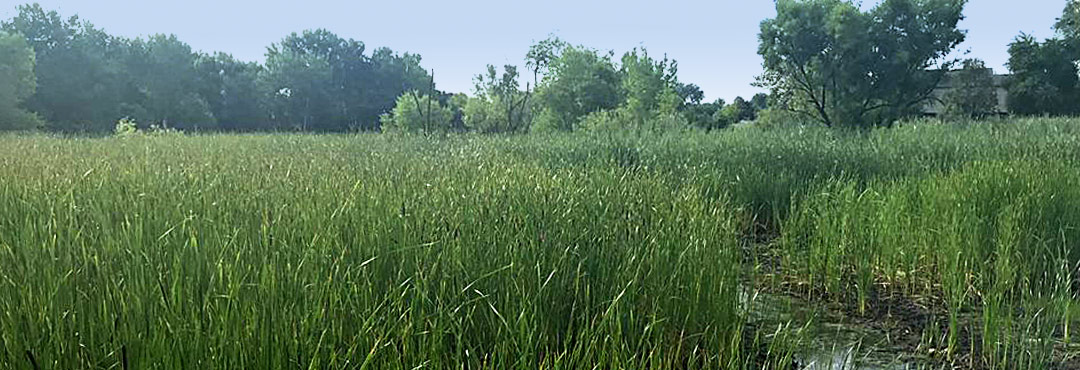Wetland Channels
Green infrastructure stormwater management features, commonly referred to as Best Management Practices (BMPs), are designed by regulators and engineers to clean and hold stormwater runoff created by an increase in impervious surfaces, such as roofs, roads, and sidewalks. Wetland channels are a type of green infrastructure BMP that hold and convey water through a wetland. Since these channels run through vegetated areas, they need to be regularly cleared of aggressive and invasive plant material in order to maintain their stormwater management functionality.
Criteria for Wetland Channels
Wetlands are used for stormwater storage when the water table is very close to the surface and/or space does not allow for other BMPs. They are designed to hold stormwater and also move water through the wetland and into receiving streams, ponds or lakes once the wetland has reached capacity. When wetland channels stop functioning properly, flooding occurs.
 ILM’s Wetland Channel Dredging Process
ILM’s Wetland Channel Dredging Process
Wetlands channels are subject to filling in especially when the wetland is comprised of aggressive cattail and common reed. These plants produce a great deal of biomass every year, coupled with their rhizomatous root growth, fill-in, and choke-off channels over time. The only way to restore the channel is to dredge out the plant material.
Access to wetlands is a challenge since they are – wet. Traditional construction equipment will sink without the use of timber mats which are time-intensive and costly to install. Another option is to wait for the frozen ground to support the equipment which is unreliable given our warmer winters. The solution to this access issue is amphibious equipment. The use of this low-ground pressure dredging equipment allows for access to the most difficult of locations with no concern about wetness or weather.
An amphibious excavator has wide tracks and sealed pontoons that allow it to perform dredging while staying afloat in shallow waters. The excavator is self-propelled, using a hydraulic direct drive track system, and can operate in demanding conditions. With ground pressure of 1.08 PSI (about half the amount exerted by a standing adult male), this vehicle can work in sensitive habitats without compacting the soils.

Amphibious excavator loading material onto a buoyant dump sled.
A marsh buggy is another amphibious unit. It serves as the transportation and has a platform for running various auxiliary attachments, such as backhoes and cutters. The marsh buggy pulls a sled that carries excavated material out of the wetland and up onto the dry ground.

Marsh buggy pulling a sled.
The sled is designed with a wide, flat bottom that glides over the substrate while holding up to 3,500 pounds of material. Outfitted with a hydraulic lift, one side of the sled can be raised so that the heavy, saturated material can slide off to unload once on land. The material is then hauled off or stored on site.

Sled with hydraulic lift.
Amphibious equipment uniquely positions ILM to solve your wetland channeling and flooding issues at a fraction of the cost of using traditional dredging equipment.
Contact Us Today to Schedule a Consultation
Interested in learning more information about our wetland channel services or looking for other responsive, cost-effective, and holistic strategies to care for your environment? Contact us today! We are happy to help you improve the beauty and health of your lake, pond, wetland, woodland, or prairie.

